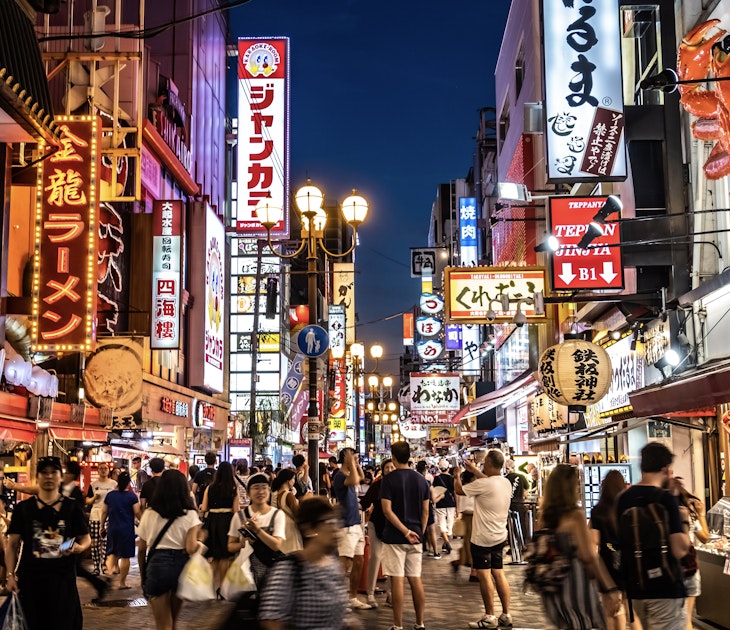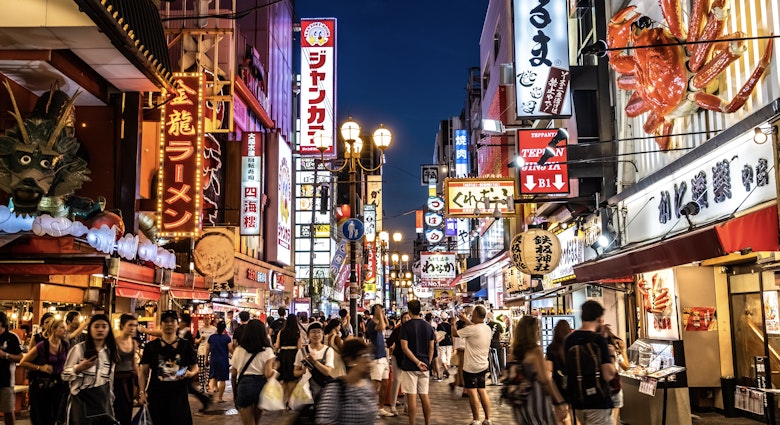Tokyo is justifiably proud of its world-class public transportation system. But this amazing city also rewards slowing down and exploring its highlights on foot.
Here’s how to do just that, connecting multiple Tokyo sights on some wonderfully curated walks that showcase different parts of the city, from some of the most iconic outdoor and spacious attractions, to lesser-known discoveries that are sure to delight your inner cultural aficionado.
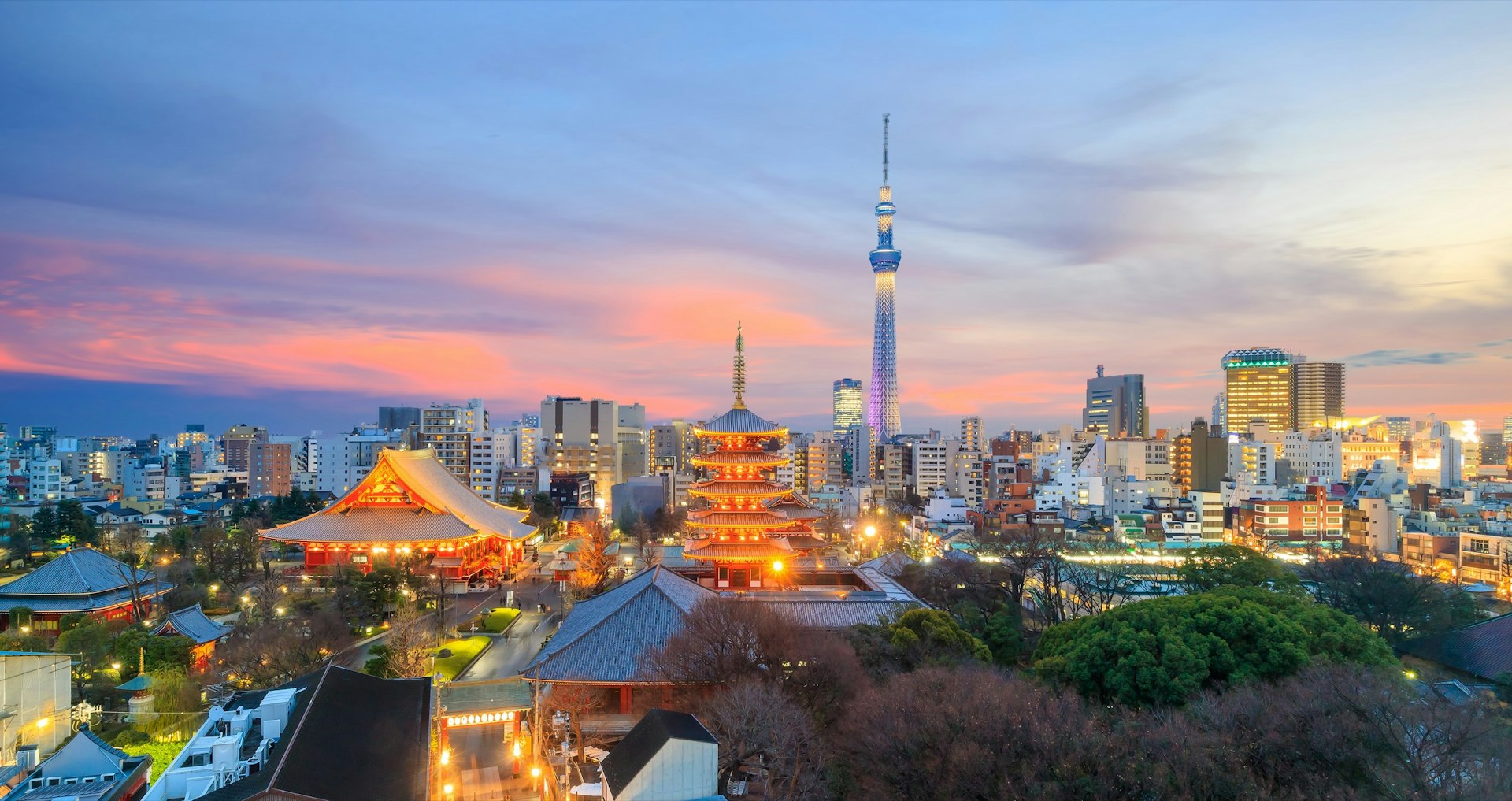
Asakusa and Sumida
(2.5km; 2.5 hours)
On this walk, get a feel for the flavor of Shitamachi (the old Edo-era ‘Low City’), while walking from Sensō-ji, the oldest temple in Tokyo, to Skytree, the world’s tallest freestanding radio tower.
With a history of around 1,400 years, Sensō-ji has been the spiritual and cultural lifeblood of Asakusa for centuries. Start by entering through the landmark Kaminarimon Gate with its huge lantern, and then strolling Nakamise Dōri, the shop-lined street and approach to the temple, with a freshly made traditional snack or two from the shop vendors.

Once you reach the temple, be enchanted by the waft of incense, the pitter-patter of feet approaching the main hall to pray, and the bright vermillion hue of the temple and its five-story pagoda.
Then take a short five-minute detour across to Asakusa Engei Hall, a performance hall for rakugo, traditional Japanese comedic storytelling, and other performative arts – one of only four such theaters in Tokyo. Take a few moments to appreciate the colorful flags and lanterns that adorn the unique exterior, and appreciate an institution that has nurtured the careers of some of Japan’s most famous comics.
Swing back around toward Nakamise Street and continue onto Sumida River. For the best view of the ‘golden flame’ atop Asahi Super Dry Hall on the opposing bank, go to the Azuma-bashi Bridge area by Asakusa Station, and then proceed north to Sumida River Walk, a new addition to the area which now gives pedestrians direct access over Sumida-gawa from the tourist areas of Asakusa to Tokyo Skytree.

Open to foot traffic from 7am-10pm, and lit up from dusk in coordination with the Tokyo Skytree light display, it’s one of the most picturesque places to enjoy the river scenery and the setting sun.
Take a well-earned break at Tokyo Mizumachi, a small commercial waterfront district nestled under the train tracks, accessible only by foot or bicycle (though bike parking is limited). It’s the perfect place for relaxed open-air dining, so grab a bite to eat along the riverside terrace facing Kitajukken River or get some takeout and stretch out at the adjoining Sumida Park.
Once revived, it’s a 10-minute walk to the magnificent 634-meter Tokyo Skytree and Tokyo Solamachi ‘Sky Town’ complex.
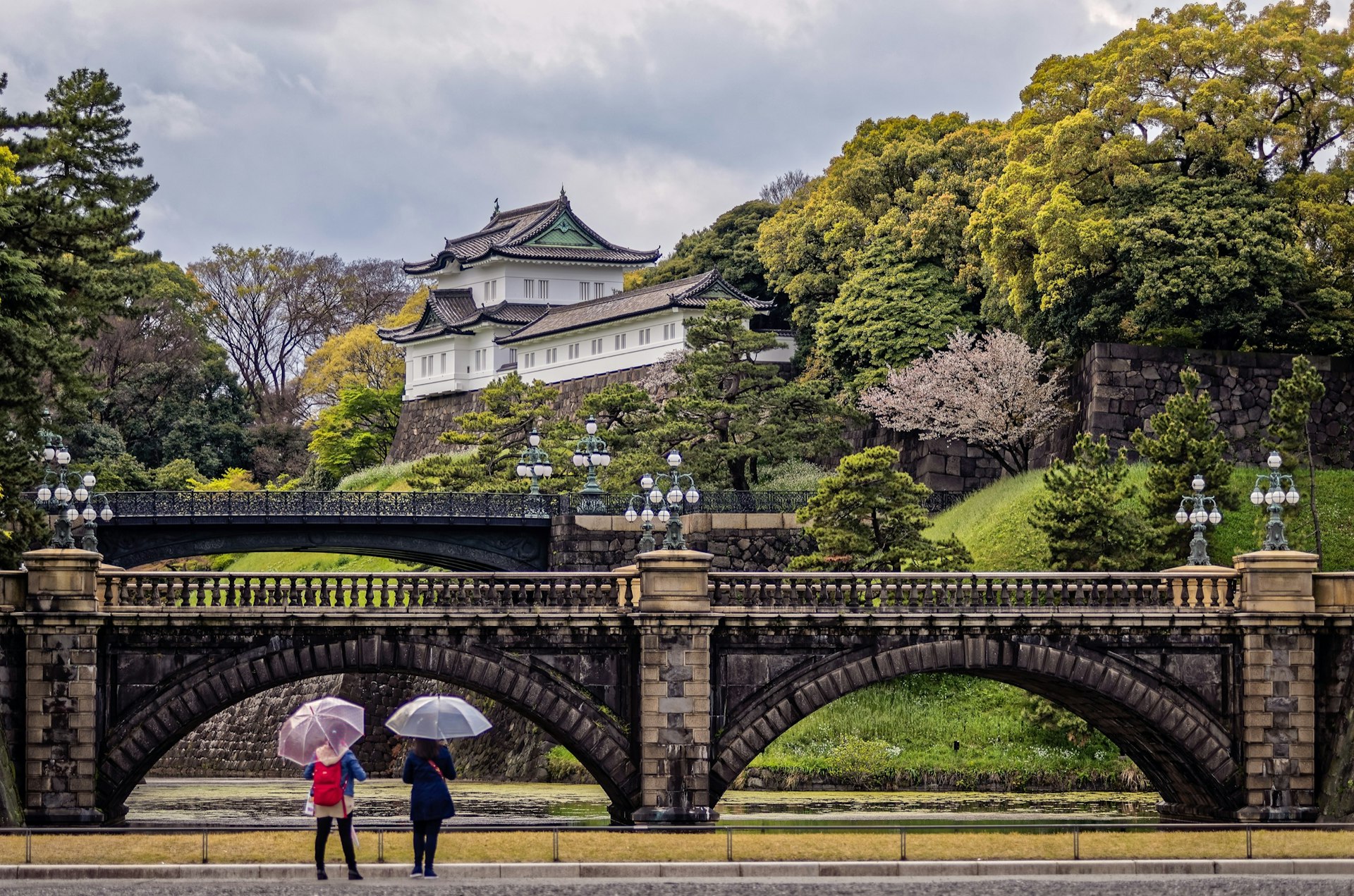
Marunouchi, Ginza and Tsukiji
(6.3km; 3-4 hours, excluding optional museum stops)
This walk will take you to the exceptional National Museum of Modern Art, around the outside of the Imperial Palace, and then onto the districts of Ginza and Tsukiji.
Located next to the Imperial Palace, on the grounds of the lush Kita-no-maru Park, is Japan’s first national art museum. Known as MOMAT, the Museum of Modern Art Tokyo houses an incredible 13,000 Japanese (and international) artworks from the early 20th century onward, 200 of which are selected at a time to display in the rotating MOMAT Collection.
Start your walk here with a culturally enriching wander through this spacious and lesser-known artistic gem, before making your way around the grounds of the Imperial Palace. Stop in at Kōkyo Gaien Plaza to take some photos of the iconic stone Megane-bashi bridge and its reflection on the moat along with the steel Nijū-bashi bridge behind it, the closest you can get to the palatial buildings without a tour.
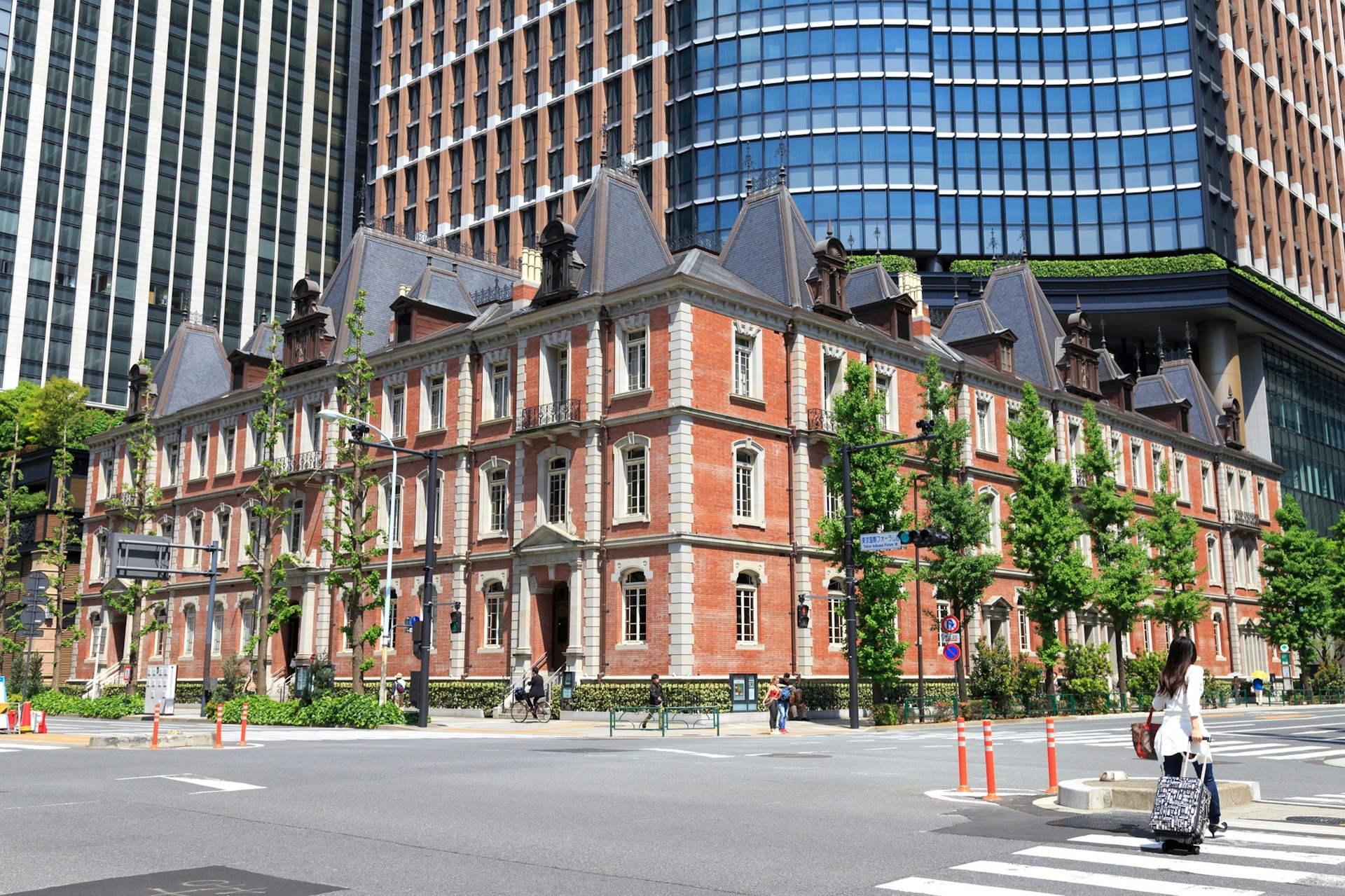
Then proceed through the gardens to Tokyo International Forum, a large convention and civic center with a striking 60-meter-high glass lobby inspired by the shape of a boat, taking the elevated glass walkways to experience the light-infused atrium from all angles.
If you’re interested in more art and architecture, pop over to the Mitsubishi Ichigōkan Museum right next door. Designed in 1894, this stunning red-brick building was the first Western-style office building in the Marunouchi district. Faithfully reconstructed based on the original design, it is now a museum focused on late 19th and early 20th century art.
If the mood strikes you, take a short detour toward Tokyo Station, where on the 2nd and 3rd floors of the KITTE building, you’ll find a most delightfully unexpected attraction called Intermediatheque, a free museum with an eclectic and fascinating collection of antiquities acquired by the University of Tokyo, the country’s most prestigious educational institution, since its foundation in 1877.
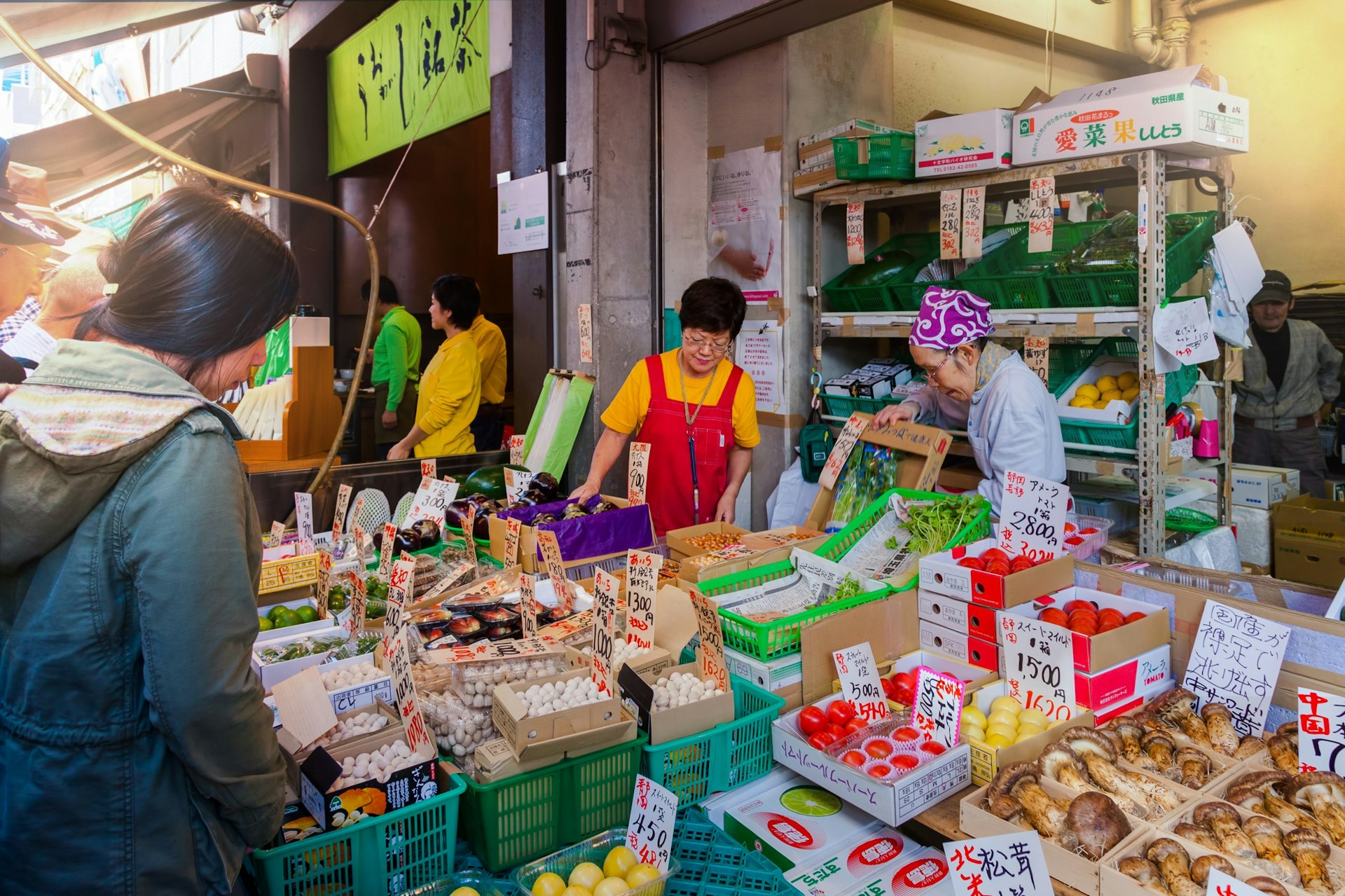
From here, head back to Tokyo International Forum and continue on to Yūrakuchō Station, turning left towards Ginza. Considered Tokyo’s most polished neighborhood, take in this luxe shopping precinct with its designer stores, upscale restaurants, and galleries, including the stunning Kabukiza Theater, before heading to Tsukiji, Tokyo’s pantry.
While the area’s inner wholesale market moved to a new location in 2018, Tsukiji Outer Market remains open and full of insanely fresh seafood and other tasty morsels. Visit Yamachō (6:50am-3:30pm) to try their freshly-made tamago-yaki (sweetened rolled egg omelette) on a stick. Gloriously fluffy and decadent, you’ll be hard pressed to wipe the smile off your face as you savor each bite.
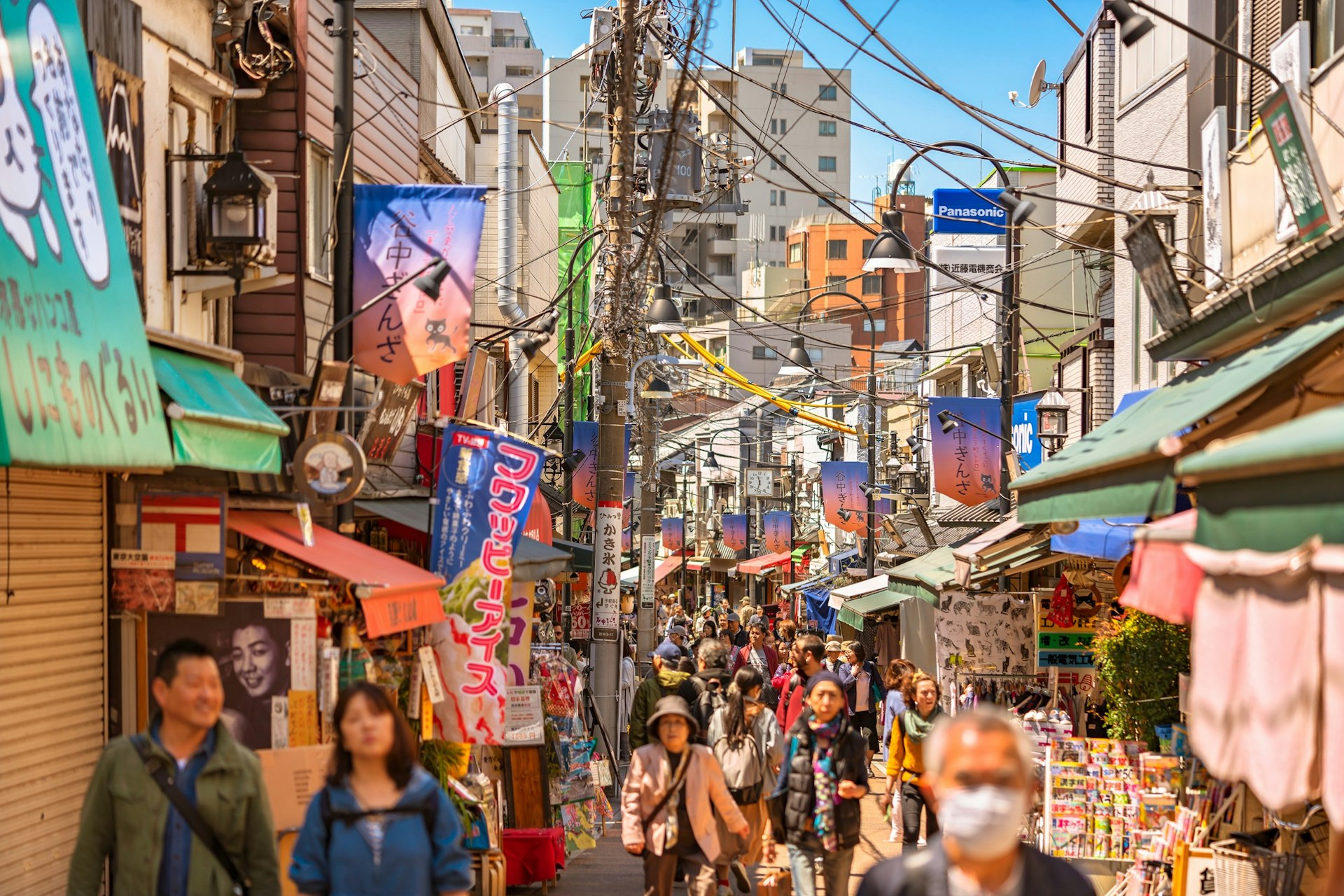
Ueno and Yanesen
(6km, 3 hours)
On this walk, we’ll first visit the quaint Yanesen area, the collective name for the Yanaka, Nezu and Sendagi neighborhoods, a charming part of the city that has all the nostalgia of Tokyo circa several decades ago.
Start with a stroll along Yanaka Ginza historic shopping street, lined with locally-owned shops, cafes and food stalls; the perfect spot to grab a delicious snack on the go. Be sure to pause at the Yūyake Dandan stairs for a great picture-taking opportunity before proceeding to the nearby Asakura Museum of Sculpture.
The former residence and studio of renowned late Japanese sculptor Fumio Asakura, this incredible building, itself listed as a national cultural property, showcases his life’s work. With a focus on realism, expect to find depictions of the human form as well many cats. Don’t miss the magnificent rooftop garden, the oldest extant roof garden in Tokyo, along with the courtyard, both registered as places of scenic beauty.
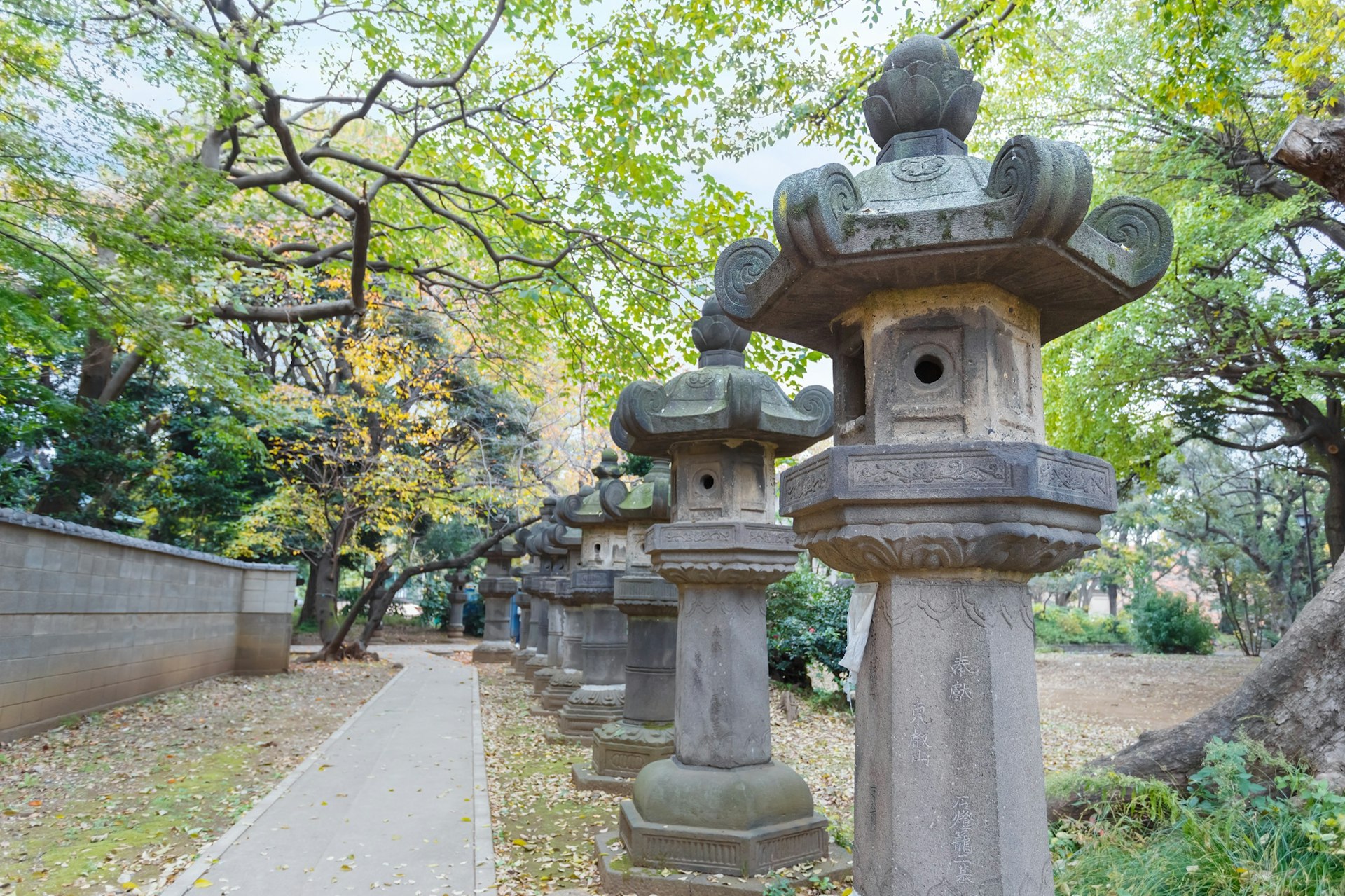
From here, continue traveling south past Yanaka Cemetery to SCAI The Bathhouse, a contemporary art gallery housed in a 200-year-old former public bath. Entry to the exhibition is by advanced reservation, which can be arranged online, although the exterior alone is worth a stop.
Moving into the heart of Ueno and its culture-packed central park, Ueno-kōen, here you’ll find the city’s highest concentration of museums, including the Tokyo National Museum, as well as other noteworthy cultural attractions. Stop in at Ueno Tōshō-gū, a gilded Shinto shrine built in 1627 dedicated to Edo-era shogun Tokugawa Ieyasu, before hopping over to Ameyokō shopping street to enjoy the market atmosphere and peruse the vendor offerings.

Following the railway line, you’ll soon reach 2k540 Aki-Oka Artisan, an arts and crafts precinct of around 50 artisanal shops, studios, galleries and cafes, nestled under the train tracks between Okachimachi and Akihabara stations. Many of the goods sold here are not mass-produced, making it an excellent spot for one-of-a-kind souvenirs and gifts.
Another 5-10 minutes and you’ll be in the heart of Akihabara, Tokyo’s ‘electric town’ and center for otaku pop culture, manga, cosplay and more.
Note: Museums in Tokyo are typically closed on Mondays. Be sure to check the current opening days and times for each attraction you wish to visit, along with COVID safety measures, before embarking on your walk.


